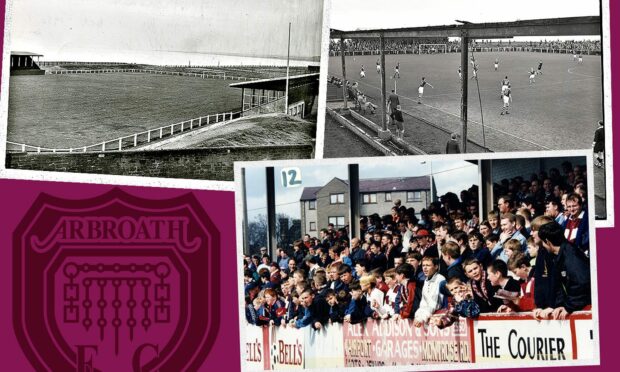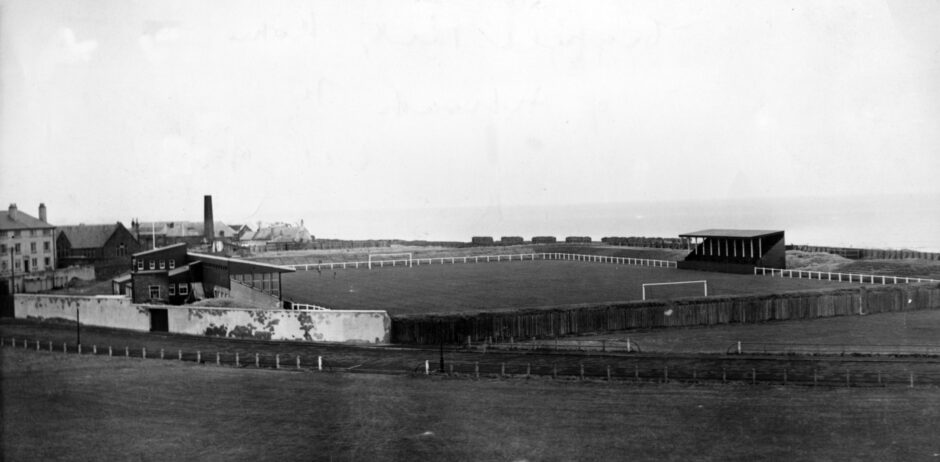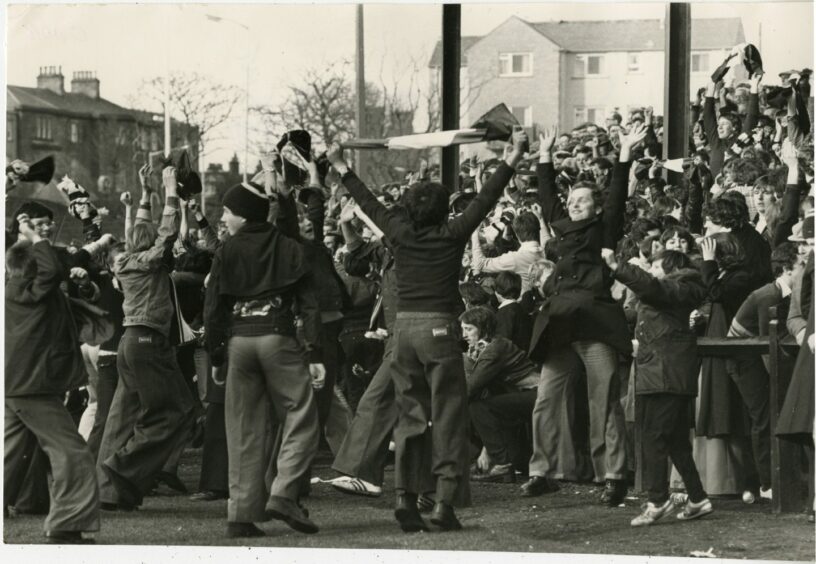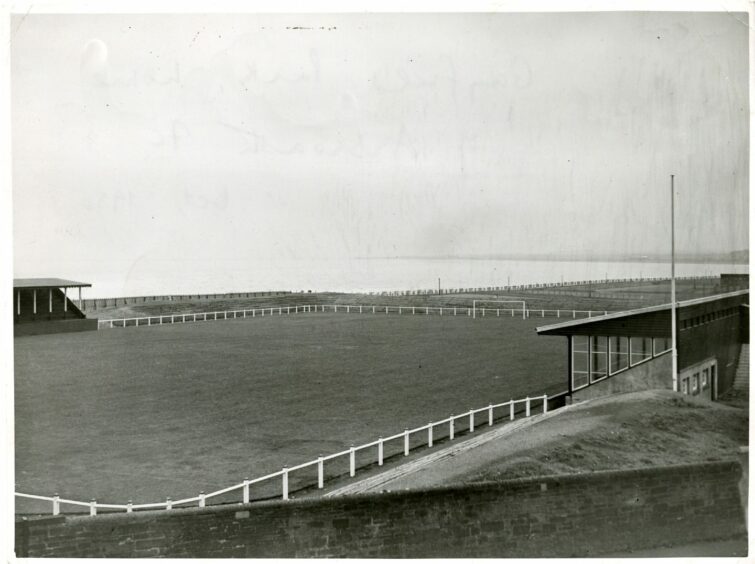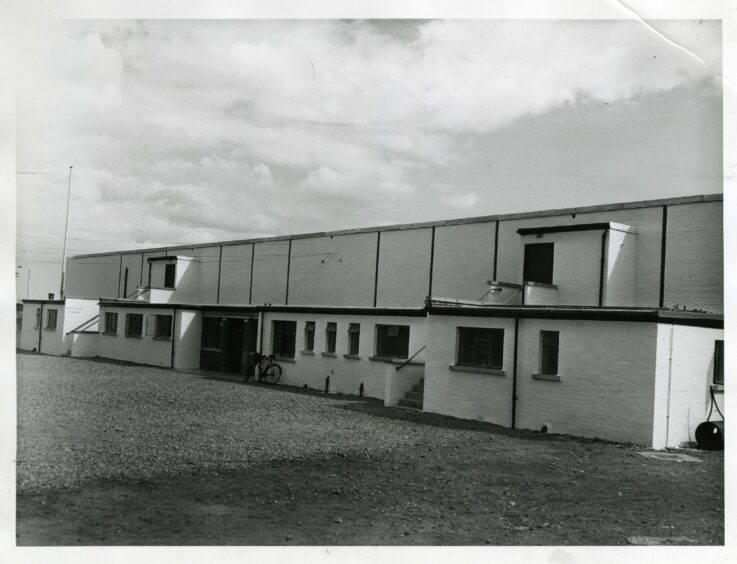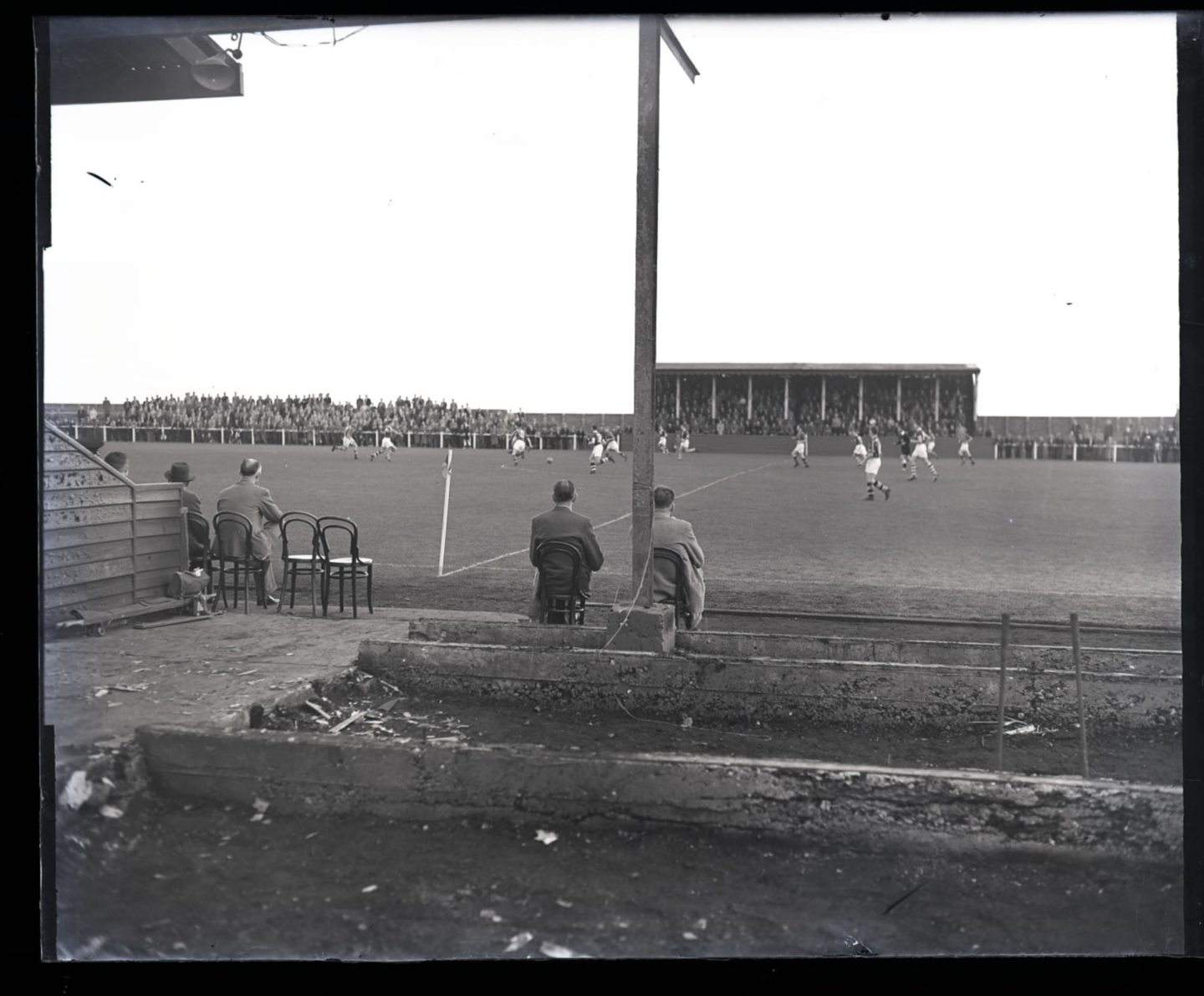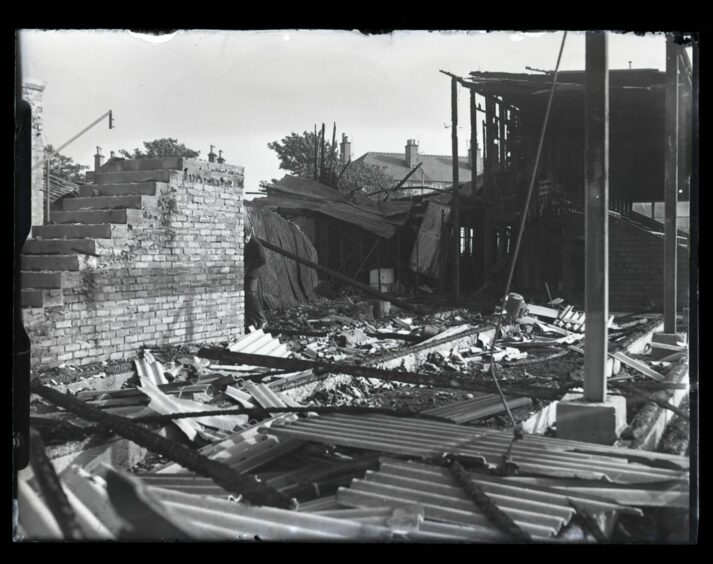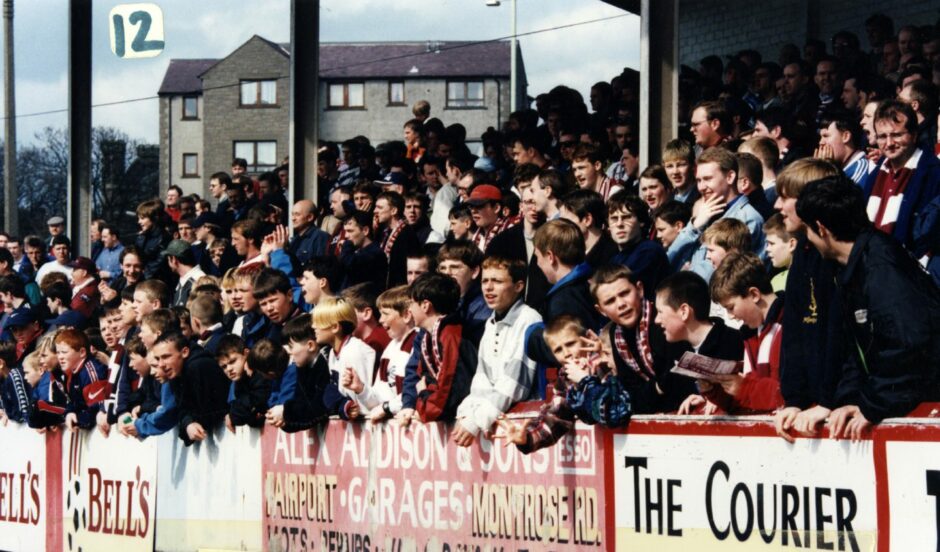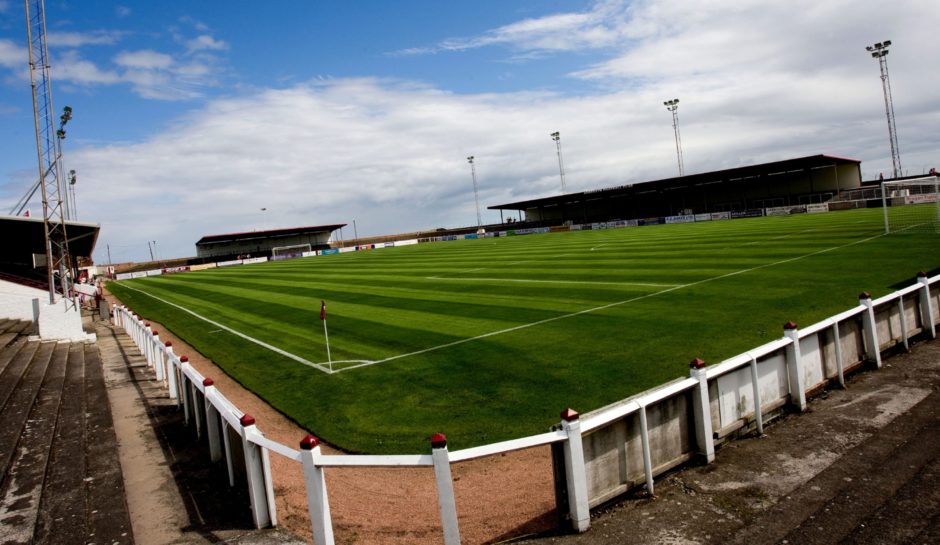Part-time Arbroath FC’s dream season came to an end after a heart-breaking 5-3 penalties defeat to nine-man Inverness.
Premier League football would have provided another chapter in the incredible history of Arbroath FC’s Gayfield Park ground.
We have opened our archives to chart the story of the ground through the decades, with the help of the club’s historian Fraser Clyne – and it’s quite the tale!
September 1880
Fraser said: “A proposal to acquire ground at Gayfield was accepted by the club committee.
“Prior to this, the club played at Woodville (once) before moving to a pitch within the Hospitalfield estate at Elliot.
“The ground at Gayfield was enclosed with a high fence and to pay for the acquisition and improvement works, club membership fees doubled from 2s 6d (12.5p) to 5 shillings (25p).
“Rob Roy of Callander provided the opposition for the opening of Gayfield in a Scottish Cup tie on October 23 1880.
“The admission fee was 3d, (little more than 1p in modern currency), although women were allowed in free of charge.
“Arbroath won 2-1.
“Gayfield was considered ‘less exposed’ than the Elliot pitch!”
The Courier announced on September 19 1884: “Gayfield: As this popular ground is pretty regularly occupied all the year except a few months in summer – and is held on a lease by the Arbroath Football Club – it has been resolved to erect a grandstand for the better accommodation of visitors.
“Plans have been procured. It is to be very substantial, will consist of six tiers of seats, and will comfortably hold 300 spectators.”
Fraser said the grandstand was burned down by vandals the following year.
On November 14 1884 Arbroath defeated Rangers 4-3 in a Scottish Cup tie but the visitors complained that the Gayfield pitch didn’t quite meet SFA standards.
Measurements were duly made and it was revealed that the playing surface was a little less than 2ft short of the minimum 50 yards width required by the rulebook.
It was also reported to be wider at one end than the other. The pitch was widened and the game replayed, on December 20, with Rangers winning 8-1.
Arbroath were 15-0 up at half-time during their world record 36-0 win against Bon Accord in a Scottish Cup tie on September 11 1885.
The reporters at the Arbroath game had a hard time keeping up with the score – and it was lucky that referee Dave Stormont kept an accurate record of the event.
The final tally could have been much more as many years later he admitted they could actually have won 43-0, after he chalked off seven goals for offside.
John Petrie was just 18 at the time and his 13 goals in a single game remains a record for British senior football.
Changes to the old ground
Fraser said the dressing rooms were fitted with water, gas and every modern improvement for the comfort and convenience of the players in August 1902.
He said the grandstand, for many years built on brick foundations, and therefore absolutely secure, were entirely repaired, painted and decorated.
The club’s plans to construct a “Greater Gayfield” led to the pitch being moved 60 yards, and it and was opened on August 29 1925 with a 4-2 defeat against East Fife.
The ground was completely redeveloped with the pitch turned round 45 degrees.
The ground had until then been leased but was now owned by the club.
Gayfield’s record attendance of 13,510 was set against Rangers in February 1952.
The visitors won 2-0.
Floodlights were first installed in 1955.
Fraser said: “In the first floodlit football match played at Gayfield Arbroath lost 4-3 to a Forfarshire Junior Select.
“There were 22 lights each of 1,000 watts used.”
Fraser said the Arbroath Herald wasn’t too impressed by the lights!
“Their low position is apt to dazzle spectators as well as players, and the light they give is hardly strong enough, but the white ball made the game easy to follow.”
Tragedy at Gayfield
A devastating fire wiped out a chunk of Arbroath FC’s history on September 18 1958.
All the photographic records of Arbroath’s great teams from the past – including the club’s 36-0 heroes – were lost when the main stand at Gayfield went up in flames.
The fire destroyed the west and central portions of the main grandstand at Gayfield with damage estimated at between £6,000 and £7,000.
The home and away dressing rooms, treatment room, referee room, secretary’s office, treasurer’s office, board room and press box were all ruined along with playing kit, training kit, boots and footballs.
Among the objects believed to have gone up in smoke was the Presidents Chair, donated to the club in 1938 by cabinet maker Alexander Neilson as a token of his lifelong support.
The fire broke out in the early hours of the morning following a match against Partick Thistle.
A fox terrier named Susan raised the alarm after scratching at her owner’s bed.
So fierce and high were the flames the playing field was clearly illuminated as if floodlit.
Timbers and beams cracked noisily and there were great showers of sparks.
People living a quarter of a mile away were wakened by the noise.
When daylight came the following morning the destroyed part of the stand was described as a “forlorn sight”.
Fraser said: “In 1998 consideration was given to moving to a new stadium at Denfield on the outskirts of the town.
“This was dependent on planning permission being given for a retail development at Gayfield.
“This never materialised and the club decided to redevelop the existing grandstand.”
What does the future hold for Gayfield?
From 2000 onwards there has been a rolling programme of investment in upgrading the stadium, which has a capacity of 6,600.
That’s included the upgrading of dressing rooms and office accommodation, development of extensive hospitality facilities and improved floodlighting.
New roofing on the stands, a supporters’ wall, a new on-site club shop and a new main entrance have also given this iconic stadium a new lease of life.
It remains at the heart of the community in the seaside town and hopefully it will welcome Premier League football in the not-too-distant future!
More like this:
The Scottish Cup scoring duel which made Arbroath FC world famous
